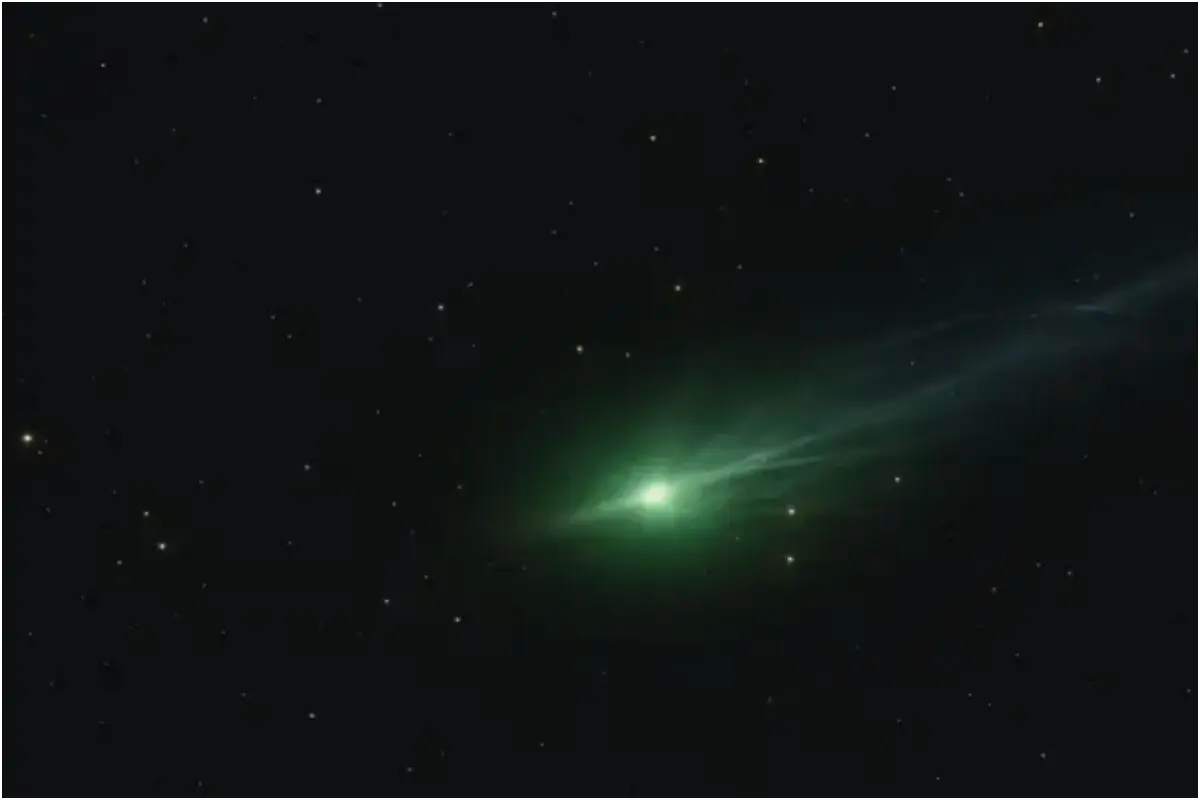3I/ATLAS Shows No Reaction to Solar Storms as Scientists Dismiss Online Trajectory Change Claims

3I/ATLAS stuns scientists with Sun pointing jet - what could it be?
The interstellar object 3I/ATLAS has shown no visible reaction to recent solar storms, according to astronomers and reports by The Economic Times. Despite coming close to the Sun, the object has not displayed a tail or any gas emissions — signs typically linked with comet activity.
Unverified Images Circulate Online
Recently, several unverified images have appeared on social media and astronomy forums, claiming that 3I/ATLAS has changed its path after its close approach to the Sun. However, no official data supports these claims. Scientists continue to analyze ongoing monitoring data, but no confirmed change in trajectory has been observed so far.
Discovery and Origin of 3I/ATLAS
NASA’s Center for Near-Earth Object Studies (CNEOS) reports that 3I/ATLAS was discovered on July 1, 2025, by the Asteroid Terrestrial-impact Last Alert System (ATLAS) in Rio Hurtado, Chile.
The “3I” stands for “interstellar,” indicating its origin from outside our solar system. This makes it the third known interstellar visitor, following ʻOumuamua (2017) and 2I/Borisov (2019).
Scientists confirm that 3I/ATLAS is moving along a hyperbolic trajectory, meaning it will not return after leaving the solar system. Such paths are typical of interstellar bodies passing through the Sun’s gravitational field.
Composition and Solar Encounter
Despite facing intense solar radiation, 3I/ATLAS remained inactive during its closest pass. Astronomers believe the object may contain metal-rich or carbon-based compounds with very few volatile materials — substances that usually vaporize to create a comet’s tail.
Images circulating online allegedly show a solid, dust-free surface, but experts caution that these visuals are unverified. Data collected after the perihelion (October 30, 2025) is now under review to check for any subtle changes in its composition or movement.
Global Observation Efforts
According to Space.com, China’s Tianwen-1 Mars orbiter captured several images of 3I/ATLAS between October 1 and 4, 2025. The China National Space Administration (CNSA) confirmed the observations and released processed images showing the object’s nucleus.
Meanwhile, NASA and the European Space Agency (ESA) are conducting parallel observations using their Mars orbiters. ESA’s JUICE mission will continue tracking the object until November 25, 2025, with results expected in early 2026.
Tracking and Public Observation
At its closest point to Earth, 3I/ATLAS was about 270 million kilometers away, making it invisible to the naked eye. Astronomers recommend telescopes with at least an 8-inch aperture for those attempting to spot it during November and December 2025.
The object came closest to Mars on October 2–3, 2025, passing within 29 million kilometers — allowing ground observatories to record precise tracking data. NASA’s Eyes on the Solar System tool continues to offer real-time updates on its movement.
Current Status
Scientists stress that 3I/ATLAS remains stable, and there is no evidence of trajectory alteration following its exposure to solar storms. The object continues to move steadily outward from the solar system, with further analysis ongoing by international teams.
Catch all the Trending News, Breaking News Event and Trending News Updates on GTV News
Join Our Whatsapp Channel GTV Whatsapp Official Channel to get the Daily News Update & Follow us on Google News.














